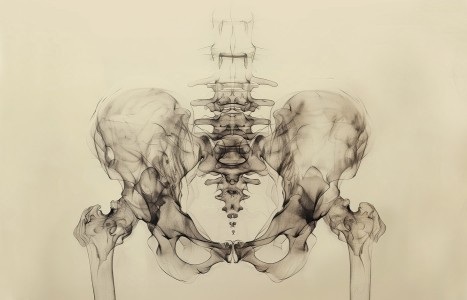People today want convenience, whether it be from their bank, credit card, favorite retail store, or restaurant. They demand it from the companies who hold their loyalty, including their health care providers (you). They don’t want to call and possibly be put on hold, and they want to use an app or schedule an appointment on your website. Here are three reasons your practice can gain by switching to online appointment scheduling.
Integration of Artificial Intelligence and Data Analytics in Acupuncture
- The integration of artificial intelligence and data analytics is revolutionizing diagnostics, treatment precision, education, and research – enhancing patient outcomes like never before.
- AI-driven algorithms can compile a patient’s medical history, lifestyle factors, and past treatment responses to recommend optimal acupuncture points and protocols.
- Artificial intelligence is also transforming TCM education, providing students and practitioners with innovative learning tools.
Editor’s Note: This is the first article in a new column on the integration of technology / AI in traditional medicine.
Acupuncture, a key pillar of traditional Chinese medicine (TCM), has been practiced for thousands of years to promote healing and restore balance within the body. Rooted in the concept of qi (vital energy) flowing through meridians, this ancient practice has stood the test of time. However, with rapid technological advancements reshaping health care, acupuncture is entering a new era. The integration of artificial intelligence (AI) and data analytics is revolutionizing diagnostics, treatment precision, education, and research – enhancing patient outcomes like never before.1
AI-Powered Diagnostic Tools: Personalizing Treatment Plans
One of the biggest challenges in acupuncture is diagnosing conditions accurately and crafting individualized treatment plans. Traditionally, practitioners rely on tongue examination, pulse diagnosis, and detailed patient history. However, AI is now augmenting this process by analyzing vast datasets to uncover patterns that may not be immediately evident to the human eye.2
AI-driven algorithms can compile a patient’s medical history, lifestyle factors, and past treatment responses to recommend optimal acupuncture points and protocols. Some innovative startups are already developing AI-powered diagnostic tools that use machine learning to assist acupuncturists in clinical decision-making. This technology enhances accuracy, improves treatment consistency, and helps bridge gaps in diagnostic interpretation, which has long been a challenge in the field.1
For example, studies highlight AI’s potential in traditional medicine, demonstrating how these tools can streamline diagnostics and treatment strategies. The ability to identify patterns in a patient’s condition – based on an analysis of thousands of similar cases – leads to more precise, evidence-based care.
AI as an Educational Tool in TCM and Acupuncture
Artificial intelligence is also transforming TCM education, providing students and practitioners with innovative learning tools. AI-powered educational platforms can simulate real-world diagnostic scenarios, offering interactive experiences that enhance understanding of acupuncture theories and syndromes.3
AI-Powered Educational Platforms
One of the most exciting applications of AI in acupuncture education is the development of intelligent learning platforms. These systems simulate patient consultations, enabling students to practice syndrome differentiation, diagnosis, and treatment planning in a risk-free environment. By analyzing symptoms and providing instant feedback, AI helps learners refine their clinical reasoning skills.4
For instance, AI has been successfully applied to TCM diagnostics, particularly in areas like tongue and facial analysis, pulse interpretation, and syndrome differentiation. These technologies provide invaluable insights that help students strengthen their diagnostic accuracy before treating real patients.5
Qibo: A Large Language Model for TCM
A particularly notable development is Qibo, a large language model trained specifically for TCM applications. Qibo has been designed to answer complex questions about TCM theories, aid in clinical decision-making, and generate detailed explanations of acupuncture techniques. By processing vast amounts of historical and modern medical literature, this AI-driven tool bridges the gap between traditional knowledge and contemporary research, making it a valuable resource for both students and experienced practitioners.3
Benefits of AI in TCM Education
The integration of AI in acupuncture and TCM education offers numerous advantages:
Personalized Learning: AI tailors content to each student’s strengths and weaknesses, allowing for a customized learning experience.
Access to Vast Knowledge Bases: AI can retrieve relevant case studies, historical texts, and modern research within seconds, enhancing learning efficiency.
Improved Diagnostic Training: By exposing students to diverse case scenarios, AI enhances pattern recognition and diagnostic confidence, ultimately refining clinical skills.4
Wearable Technology and Biofeedback Monitoring
Wearable health technology is reshaping patient care across medical fields, and acupuncture is no exception. Smart devices capable of monitoring heart rate variability, stress levels, and sleep patterns can provide valuable biofeedback for both patients and practitioners, helping assess treatment effectiveness in real time.5
Imagine a scenario in which a patient wears a smartwatch that tracks stress fluctuations throughout the day. After undergoing acupuncture treatments, data from the device can reveal measurable improvements in stress levels, offering tangible evidence of acupuncture’s efficacy. Such objective metrics not only reinforce the credibility of acupuncture in modern medicine but also allow practitioners to fine-tune treatment plans for better outcomes.
Data Analytics for Efficacy Research
A long-standing challenge in acupuncture has been the lack of large-scale, data-backed research to validate its efficacy, particularly in the realm of Western medicine. However, data analytics is now changing the narrative by aggregating and analyzing treatment outcomes from clinics worldwide.2
A major breakthrough in this space was the Acupuncture Trialists’ Collaboration, which conducted a large-scale meta-analysis using data analytics. Their research confirmed that acupuncture is significantly effective in treating chronic musculoskeletal pain, headaches, and osteoarthritis, with benefits persisting over time.2
Ethical and Practical Considerations
While the integration of AI, data analytics, and wearable technology presents exciting opportunities for acupuncture, it also raises several ethical and logistical concerns:
Data Privacy and Security: With patient data being collected and analyzed, it’s crucial to implement stringent privacy measures to protect sensitive information.
Preserving the Human Element: Acupuncture is deeply rooted in the practitioner-patient relationship. While AI can enhance diagnostic accuracy, it should never replace the intuition, empathy, and holistic perspective of a skilled acupuncturist.
Accessibility and Affordability: Advanced AI-powered tools and wearable technology should be made accessible to all practitioners, including those in smaller clinics or underserved regions. Ensuring equitable access will be key to widespread adoption.1
References
- Chu H, et al. AI’s role in traditional medicine and diagnostic strategies. Front Pharmacol, 2022 Apr 1;13:826044.
- Vickers AK, et al. Acupuncture for chronic pain: update of an individual patient data meta-analysis. Acupuncture Trialists’ Collaboration. J Pain, 2017 Dec 2;19(5):455-474.
- Xu T, et al. AI Applications in TCM education diagnostics. OpenReview.net, 2024-07-19;13:11.
- Zhang H, et al. Qibo: a large language model for traditional Chinese medicine. ArXiv, June 22, 2024.
- Eastwood B. “Wearable Technology for Healthcare Trends.” HealthTech Magazine, March 29, 2024.



